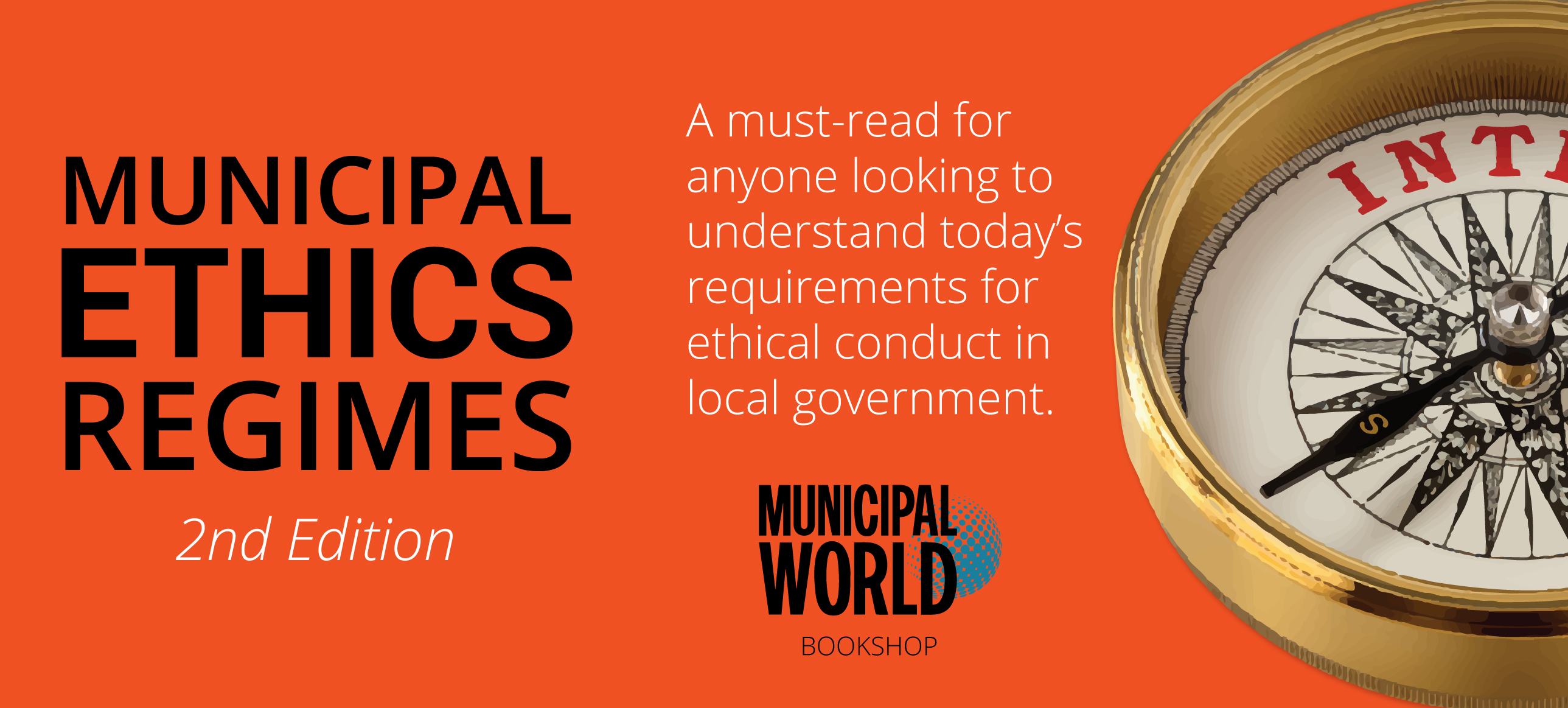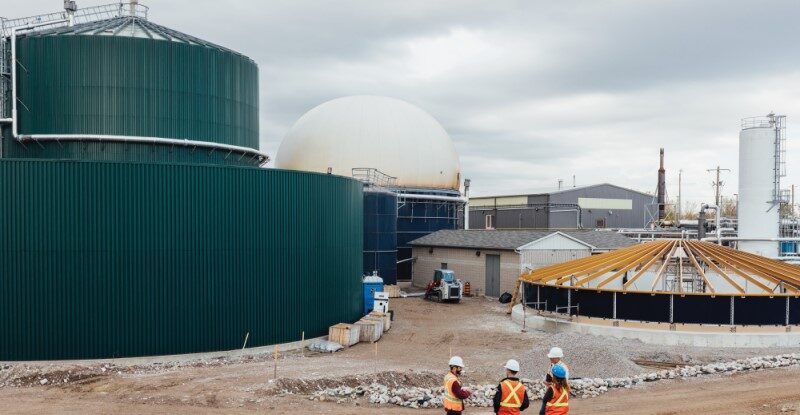FCM welcomes National Adaptation Strategy, supports investments in municipal resiliency

Canada is already feeling the impacts of climate change and extreme weather. Canadians are experiencing record-breaking climate events – from wildfires to extreme heat waves to floods – across the country.
Pervasive and slow onset events like permafrost thaw and sea-level rise are changing landscapes and threatening safety and livelihoods.
On November 24, the federal government took another major step forward in equipping Canadians to face the mounting impacts of a changing climate. With the release of Canada’s National Adaptation Strategy: Building Resilient Communities and a Strong Economy for engagement and final consultations, Ottawa has committed to a whole-of-society approach to climate adaptation.
National Adaptation Strategy
Bill Blair is President of the King’s Privy Council for Canada and Minister of Emergency Preparedness. He joined several federal colleagues in announcing the strategy. They also unveiled the federal government’s action and investment plan for the immediate future.
“The devastating wildfire, flooding, and hurricane seasons of the past year have demonstrated that urgent action is required to address the increased frequency and severity of climate-related disasters,” Blair said. “The National Adaptation Strategy represents a new chapter in our work of preparing for emergencies that builds on our Emergency Management Strategy and will allow us to implement a risk-based approach focused on whole-of-society engagement to reduce our vulnerability and build Canada’s resilience.”
The announcement includes $1.6 billion in new federal funding commitments. These funds will help protect communities from coast to coast to coast.
Funding will help municipalities and townships build public infrastructures of the future. These efforts will include everything from roads and bridges that can withstand flooding to making sure Canadians have access to the information they need to stay safe during wildfires.
Also, Ottawa will enable engagement and work with Indigenous communities on the development of region-specific health initiatives linked to changing climate conditions. The extra funding builds on existing federal commitments to adaptation, disaster resilience, and disaster response that total more than $8 billion to date.
Municipal Investment Welcomed
The Federation of Canadian Municipalities (FCM) welcomed Ottawa’s announcement. FCM President Taneen Rudyk said the organization welcomed the announcement. Rudyk called the strategy “a critical framework” that will help to better protect Canadians from the effects of extreme weather events made more severe by a changing climate.
“For several years now, record-breaking heatwaves, flooding, and devastating hurricanes, storms, and wildfires have wreaked havoc on homes, businesses, and communities. These extreme weather events are frequent and severe, and Canada is not prepared to face them,” Rudyk said. “There is an urgent need to ramp up our efforts to better understand and mitigate climate risk both short- and long-term across the country, especially for the communities that are most at risk.”
New federal funding will help put in place the five priority areas of the strategy:
- improving health and well-being;
- building and maintaining resilient public infrastructure;
- protecting and restoring nature and biodiversity;
- supporting the economy and workers; and
- reducing the impacts of climate-related disasters.
This first-of-its-kind national Adaptation Action Plan outlines clear adaptation objectives and targets to focus policy and spending on measurable results. The federal government is delivering some 70 actions to address both immediate and future climate risks to Canada.
In the last few years, municipalities have seen first-hand the impacts of extreme weather events.
“From southeastern New Brunswick to the Lower Mainland in British Columbia, hurricanes, floods, and wildfires have displaced communities and damaged critical infrastructure,” said Dominic LeBlanc, Minister of Intergovernmental Affairs, Infrastructure and Communities. “We know these events are only going to intensify. Working with our partners, our government will invest to ensure Canadians are protected – and the National Adaptation Strategy will be a key tool in guiding those investments.”
The funding announced as part of the National Adaptation Strategy includes:
- a commitment to the Green Municipal Fund (GMF) to help communities deploy funding in climate-focused projects to specific municipal needs of the future;
- enhancing the Disaster Mitigation and Adaptation Fund to build new structural and natural infrastructures to increase the resilience of communities; and
- developing the tools and data services Canadians need to access the right information and support experts with climate modelling and assessments.
Long-Term Municipal Support
Rudyk praised Ottawa’s investment in the GMF. By leveraging FCM’s network of municipalities and municipal associations across Canada, Rudyk said, the fund will deliver adaptation-focused capacity building. It will also be better able to provide funding directly to local governments.
This new approach to supporting municipal adaptation efforts, Rudyk said, will provide a single window for communities across Canada. It will allow municipalities to advance their adaptation priorities through the GMF. She went on to describe the fund as a “long-standing, widely recognized, and highly successful mechanism” in the delivery of high-impact environmental outcomes.
Rudyk went on to say that FCM also welcomes the top-up made to the Disaster Mitigation and Adaptation Fund (DMAF). FCM will continue to emphasize the importance of long-term, predictable funding for climate resilient infrastructure. FCM, she added, is calling on Ottawa to commit to long-term funding through DMAF, starting in Budget 2023.
Perhaps most significantly, Rudyk said the announcement is important for another reason. It recognizes the leadership role municipalities play in driving solutions for national challenges.
“FCM was also pleased to see that the National Adaptation Strategy framework signals meaningful progress toward a whole-of-Canada approach to climate mitigation and adaptation,” Rudyk said. “Recent events have taught us that when federal and municipal leaders work together, we can face these challenges in a way that supports our economy, builds stronger communities, and ensures Canadians’ quality of life.”
The strategy is now open to the provinces, territories, and National Indigenous Organizations for a final 90 days of engagement on the strategy’s common goals and specific measurable targets and objectives. The strategy is a result of extensive engagement since 2021. It presents a shared, national vision for climate resilience and a framework to measure progress.
Making adaptation investments now will have major economy-wide benefits later. Expert research suggests that every $1 invested in prevention and preparation can save up to $15 in costs. Adapting to climate change requires all orders of government, the private sector, and Canadians to work together to build resilient communities and a stronger economy, to ensure Canadians continue to thrive into the future.
Climate Change Adaptation
The fight against climate change has reached the doorstep of all Canadians. Steven Guilbeault is Minister of Environment and Climate Change. He said all government must not only reduce the emissions that cause climate change but adapt to the changes that are now upon all Canadians.
“Adaptation is a cost-effective and positive investment in the present and future,” Guilbeault said. “Taking measures to adapt can save lives, avoid damage to communities, reduce economic shocks to supply chains, and spur innovative technologies and jobs.”
Climate change adaptation refers to any activity that reduces the negative impacts of climate change, or helps people cope with them, or one that takes advantage of new opportunities that result from climate change.
Every dollar spent on adaptation measures saves $13 to $15, including both direct and indirect economy-wide benefits. Every dollar invested in adaptation generates significant benefits. Some examples of this return on investment include:
- implementing new flooding and wildfire guidelines and standards for new construction could save Canada an estimated $4.7 billion a year – saving nearly $12 per $1 invested;
- climate-resilient building codes implemented in Canada have an estimated benefit-cost ratio of 12:1, which is equal to a 1,100 percent return on investment; and
- urban forests in the City of Toronto have been shown to generate $3.20 for every dollar invested by lowering cooling costs, improving air quality, and reducing strains on stormwater infrastructure.
Fiscal Impact of Inaction
According to the Canadian Climate Institute, by 2025 climate impacts will slow Canada’s economic growth by $25 billion annually, which is equal to 50 percent of projected Gross Domestic Product growth.
By 2030, the average annual loss from disasters is forecast to reach $15.4 billion – a forecast that can be reduced by ambitious adaptation action.
“Canadians in every region of the country are already feeling the effects of climate change, and the costs of these impacts are projected to rise to $25 billion by 2025 and to the range of $100 billion annually by 2050. Inaction is not an option,” said Jonathan Wilkinson, Minister of Natural Resources. “Through the National Adaptation Strategy, we will advance key resilience and adaptation measures to mitigate these changes, preserve livelihoods, and protect our communities and the critical infrastructure we depend on. The result will be a stronger, safer, and more prosperous place to call home.”
Robust engagement has informed the proposed approach for the National Adaptation Strategy.
This engagement included input from nearly 120 experts and more than 800 written submissions from diverse stakeholders; more than 20 workshops and roundtables; a national symposium with 1,400 participants; and 16,000 contributions from the public received through the public engagement platform. MW
✯ Municipal World Insider and Executive Members: You might also be interested in Sean Meyer’s article: Iron & Earth: Training the clean energy sector’s future.
Related resource materials:



